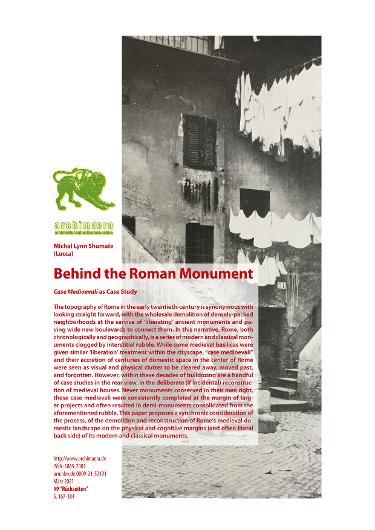Behind the Roman Monument
DOI:
https://doi.org/10.60857/archimaera.9.167-84Abstract
The topography of Rome in the early twentieth-century is synonymous with looking straight forward, with the wholesale demolition of densely-packed neighborhoods at the service of ‘liberating’ ancient monuments and pa- ving wide new boulevards to connect them. In this narrative, Rome, both chronologically and geographically, is a series of modern and classical mon- uments clogged by interstitial rubble. While some medieval basilicas were given similar ‘liberation’ treatment within the cityscape, “case medioevali” and their accretion of centuries of domestic space in the center of Rome were seen as visual and physical clutter to be cleared away, moved past, and forgotten. However, within these decades of bulldozing are a handful of case studies in the rear view, in the deliberate (if incidental) reconstruc- tion of medieval houses. Never monuments conserved in their own right, these case medievali were consistently completed at the margin of larg- er projects and often resulted in demi-monuments consolidated from the aforementioned rubble. This paper proposes a synchronic consideration of the process, of the demolition and reconstruction of Rome’s medieval do- mestic landscape on the physical and cognitive margins (and often literal back side) of its modern and classical monuments.
Downloads
Veröffentlicht
2021-03-16
Ausgabe
Rubrik
Artikel

